The Most Intricately Crafted Telecaster in Fender History
This experimental Tele features ornate body laminations and a fretted rosewood neck

This guitar probably left the factory around 1975, but it was put together earlier on by Philip Kubicki in Fender’s R&D department. It was likely made around 1971, and finally completed around ’75 as the original pots date to then.
Philip Kubicki was an apprentice to renowned guitar-builder Roger Rossmeisl, and they both worked on the George Harrison Rosewood Telecaster [made in 1968] and the Hendrix Rosewood Stratocaster prototypes.
Kubicki also worked on the Thinline Telecaster, LTD and Montego projects. He ended up becoming a production manager at Fender and was ‘the guy’ when Rossmeisl left [in the early ‘70s.]
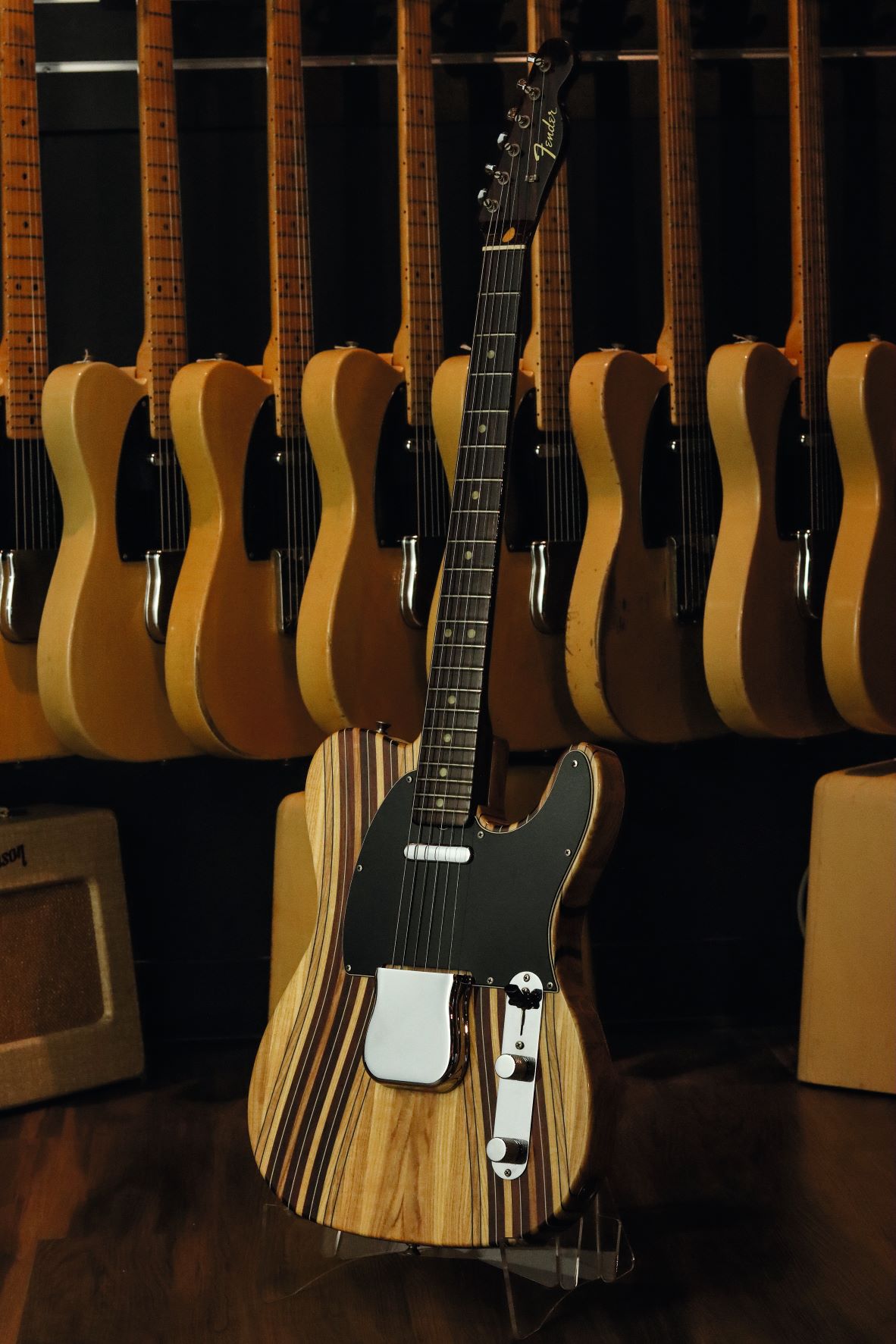
There are some very experimental guitars that Kubicki made, and this is one of them. When I met him in the 80s, he was already out of Fender and was busy building his [Factor] Basses. The store I was with was a dealer for them. He was a very smart guy and had a lot of interesting CBS-era Fender stories.
This guitar features a solid rosewood neck with a maple skunk stripe and headstock plug, like a regular production Rosewood Tele – not a rosewood cap, like Harrison’s prototype Rosewood Tele.
It must have been a leftover Rosewood Telecaster neck that he used [Rosewood Telecasters were manufactured sporadically between 1968 and 1972.] There is no serial number on the neckplate, just the ‘F’ Fender logo, which makes sense as it’s a prototype guitar.
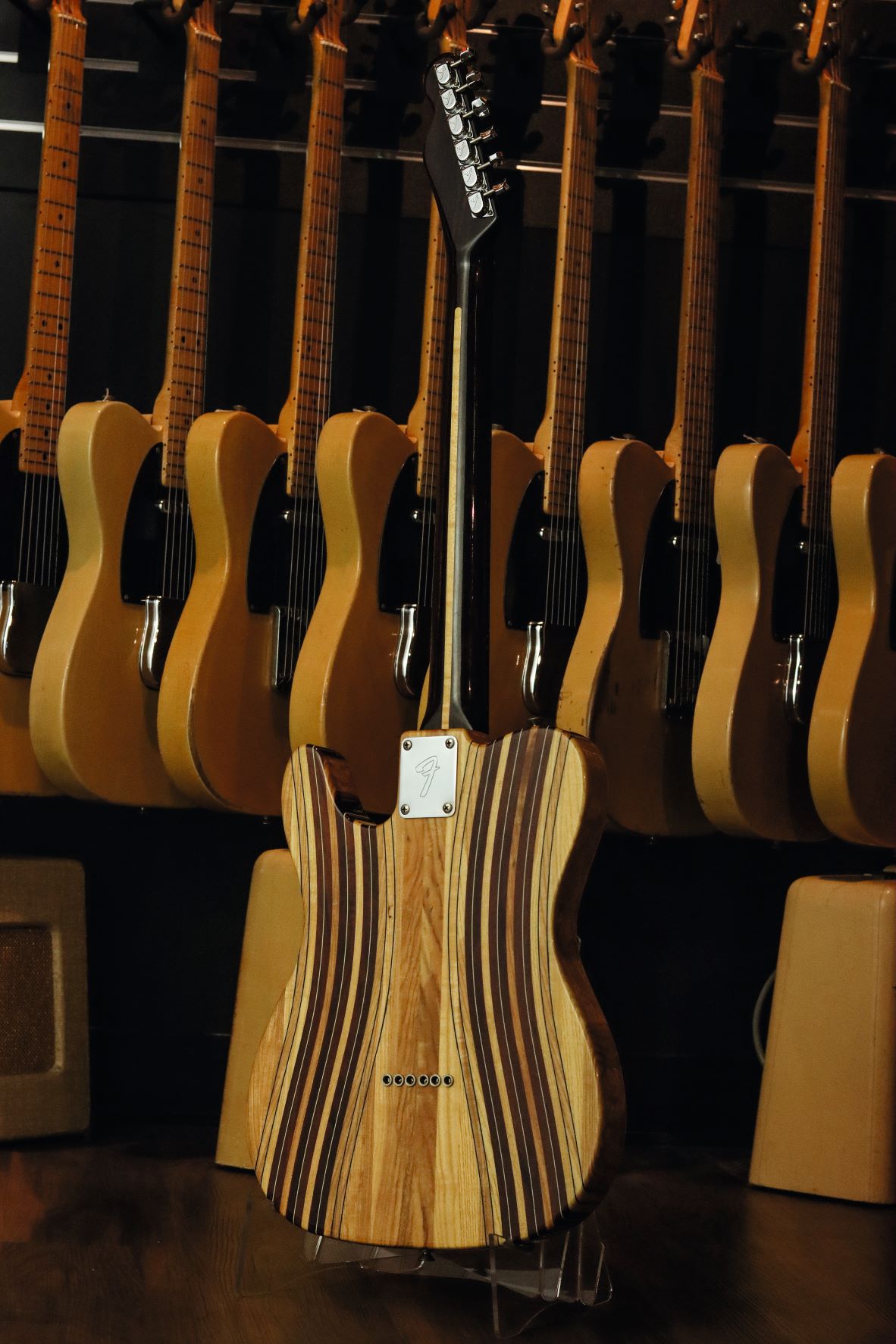
It sounds very much like a Rosewood Telecaster. We were trying to match the guitar’s sound with other Teles we have here so that we could write a description for the website.
Get The Pick Newsletter
All the latest guitar news, interviews, lessons, reviews, deals and more, direct to your inbox!
But it didn’t sound like an ash-body Tele. And it didn’t sound like an alder-body Tele. We just kept going through guitars and the closest thing we could find to it was a 1970 Rosewood Telecaster that we have here.
The body is crazy. Evidently, a lot of work went into this electric guitar. I imagine every type of wood Kubicki had on his bench went into it. It’s made from pieces of alder, ash, ebony, mahogany, padauk, purpleheart and spruce. And there are a couple of woods that I can’t identify. There are about 35 different pieces of wood that make up the body.
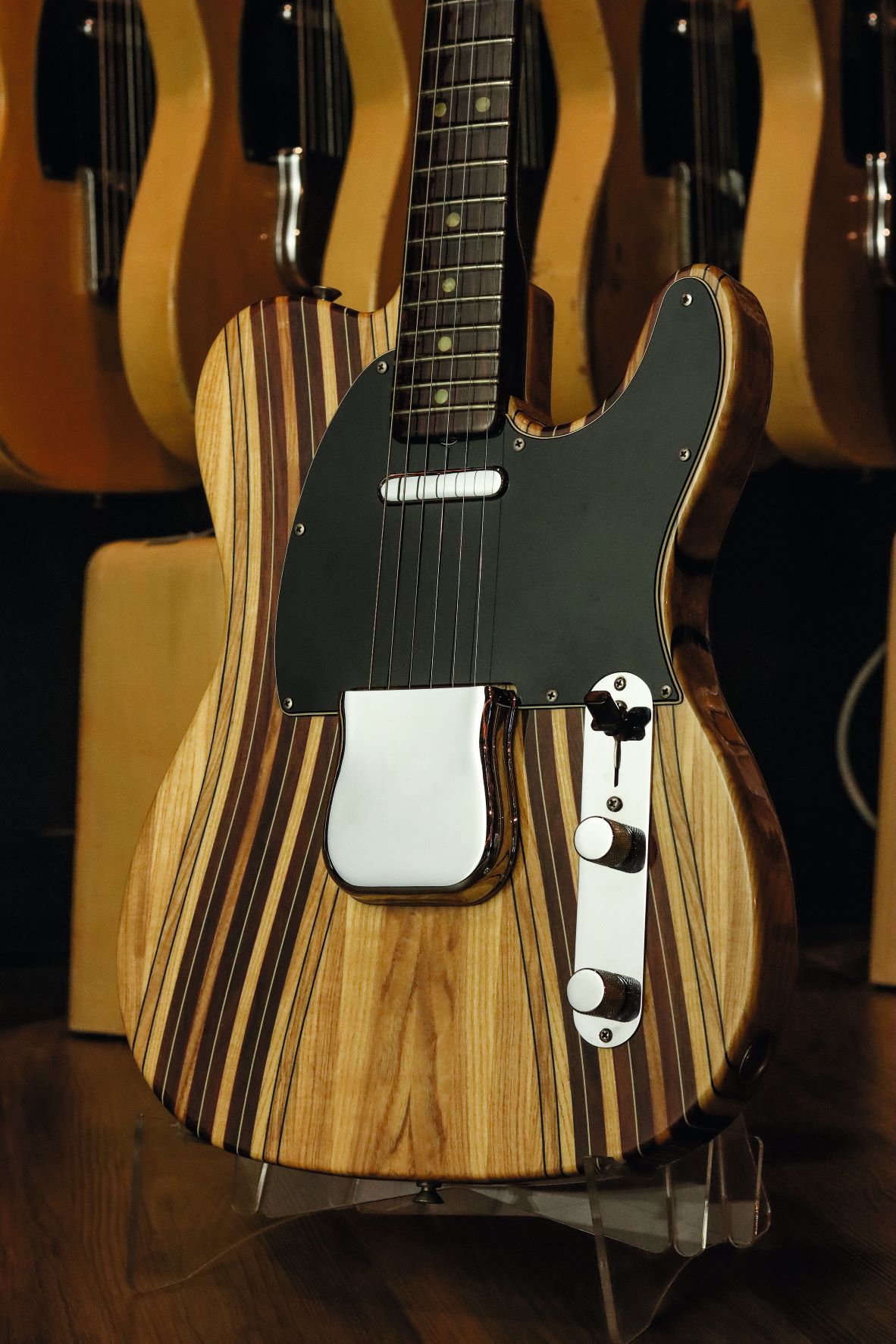
They call this guitar the Stringer because it looks like there are strings running through it – tiny little veneers that just separate the different woods. It’s got these black strings running through that are made of ebony to contrast with the light woods. And to contrast with the darker pieces, Kubicki used thin strips of white wood. It really is something else.
It’s got a black pickguard with pearloid on the back, just like a late-60s Rosewood Tele. And the bridge and knobs are late ‘60s, too. Because the original pots are dated to 1975, I think this guitar was finally assembled after lying around the workshop unfinished for a long time. It eventually went out the door with someone, somehow.
When I first came across this guitar years ago, the person who had it showed it to me said, ‘I think this is a partscaster.’ And I said, ‘Yeah? I don’t think so. I think you’ve got something really cool there. Would you mind if I open it up with you?’ So we did, and we discovered Philip’s signature inside. It’s located in the bridge/pickup rout.
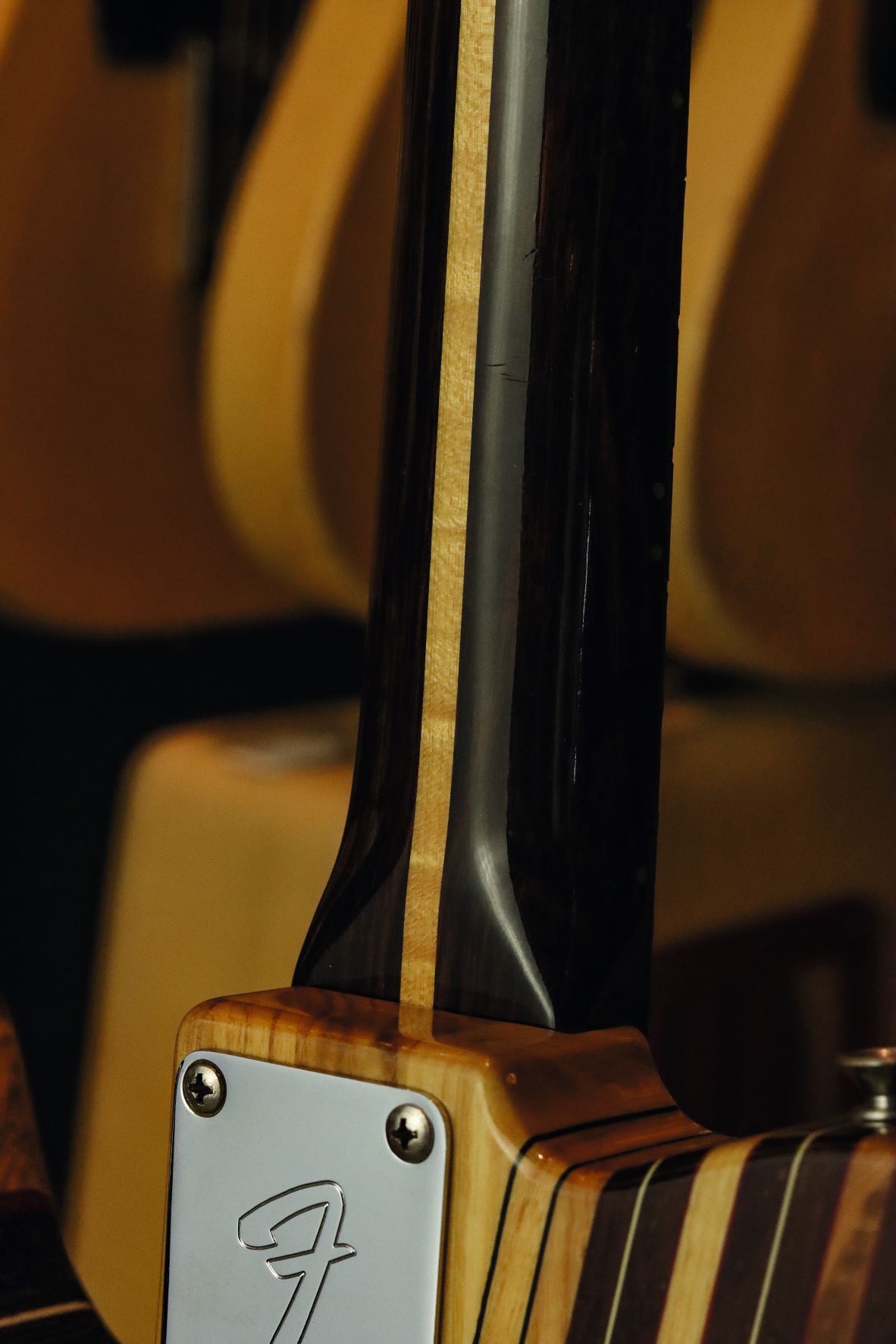
So, despite the pots, I believe this guitar was made prior to 1975; it was just finished and left the factory then, or after.
I showed it to someone who also worked at Fender and was familiar with it, and he said that they were trying to create an instrument that was a showpiece for all the different types of woods you could select. But it’s all folklore. It’s important to remember that a lot of old-timers left Fender in the late 60s and they also hired new staff, so stories often got mixed up.
I think it was probably more of a pet project for Philip Kubicki – when he had time. But the level of detail that went into creating this guitar is a little extreme. Fender didn’t make stuff like this in the 70s. Usually the quality is nowhere near as good. You can tell that a lot of special care went into it.
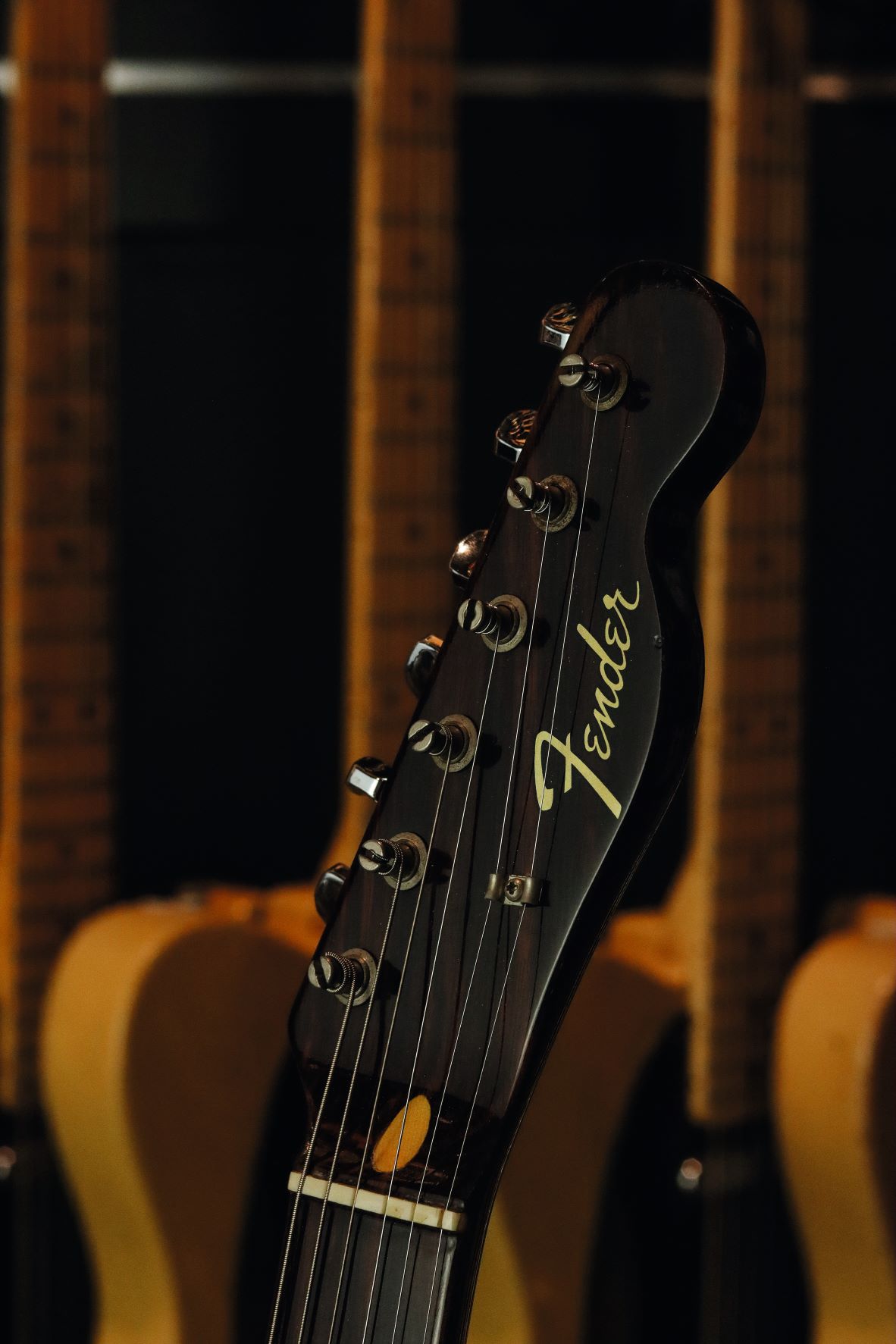
It’s in incredible condition. No work has ever been done to it and it’s got no extra holes. All the wood looks beautiful and is blemish-free. It’s not the lightest guitar; it’s in the upper sevens [pounds.] For a Telecaster, that’s maybe a little on the heavier side, but then there’s a lot of glue holding it all together!
But it’s a really, really nice piece, and you don’t get to see guitars like this very often. That’s what we’re all about at Well Strung Guitars – seeing stuff you can’t see anywhere else!
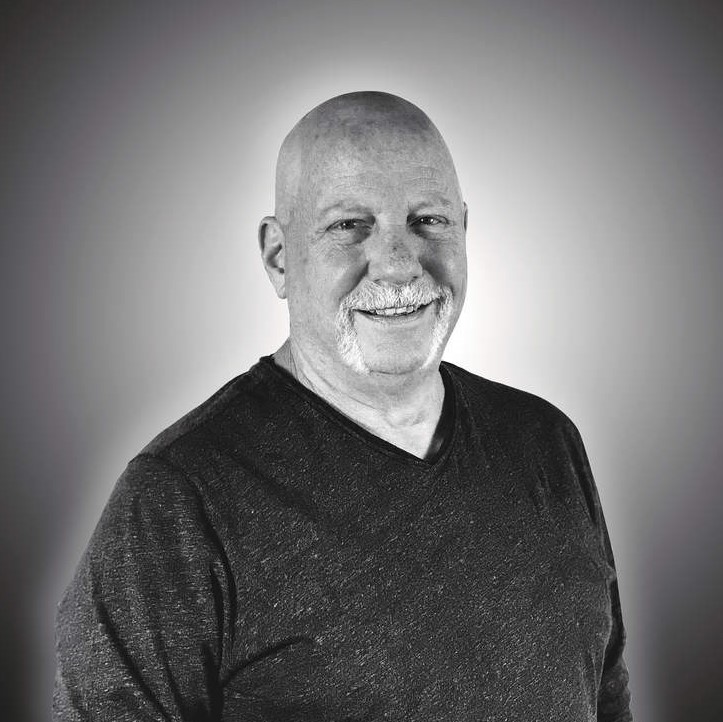
Vintage guitar veteran David Davidson owns Well Strung Guitars in Farmingdale, New York
info@ wellstrungguitars.com / 001 (516) 221-0563
Rod Brakes is a music journalist with an expertise in guitars. Having spent many years at the coalface as a guitar dealer and tech, Rod's more recent work as a writer covering artists, industry pros and gear includes contributions for leading publications and websites such as Guitarist, Total Guitar, Guitar World, Guitar Player and MusicRadar in addition to specialist music books, blogs and social media. He is also a lifelong musician.
"We tried every guitar for weeks, and nothing would fit. And then, one day, we pulled this out." Mike Campbell on his "Red Dog" Telecaster, the guitar behind Tom Petty & the Heartbreakers' "Refugee" and the focus of two new Fender tribute models
“A good example of how, as artists, you have to blindly move forward with crazy ideas”: The story of Joe Satriani’s showstopping Crystal Planet Ibanez JS prototype – which has just sold for $10,000










